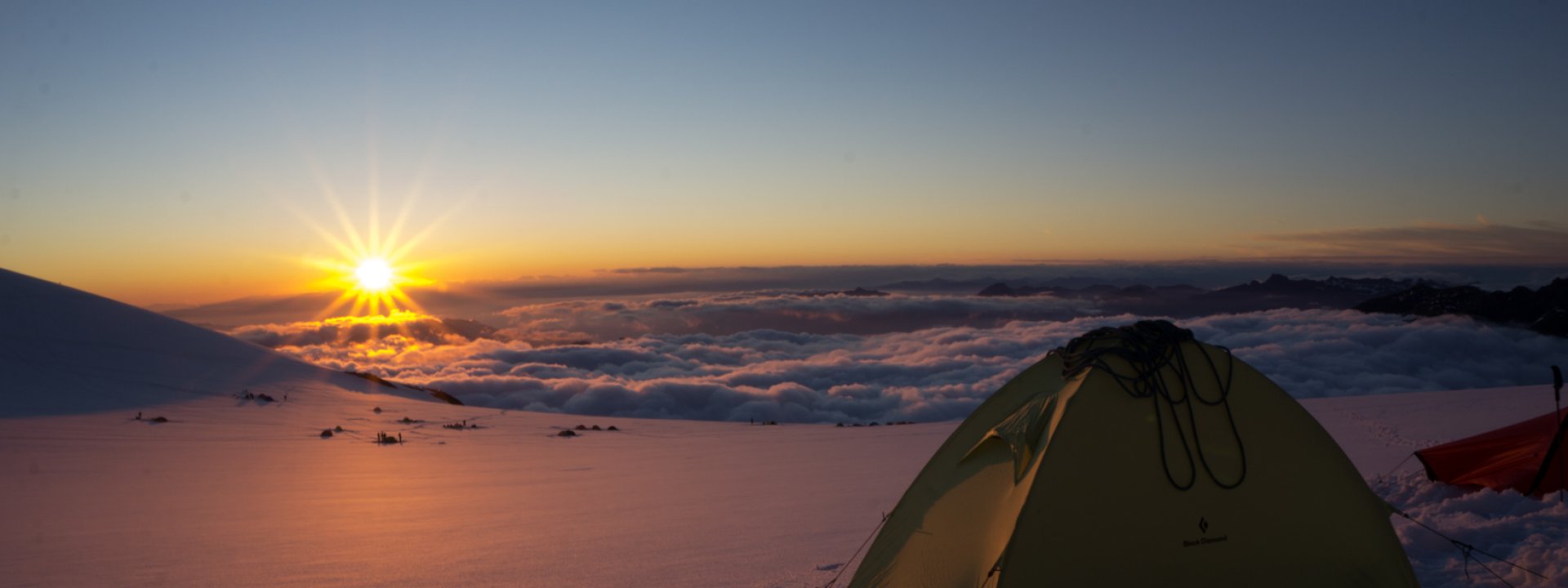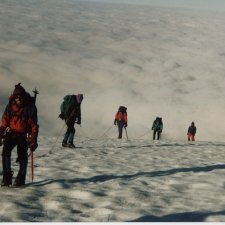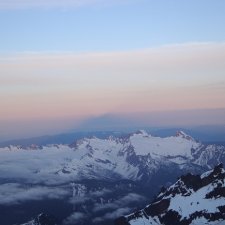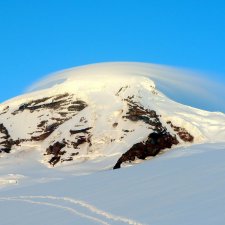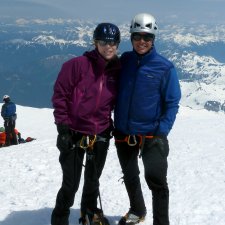Mt. Baker has the distinction of being the third tallest mountain in Washington and was once thought to be the most active volcano in the Cascade chain. (This was just prior to the eruption of Mount St. Helens in 1980!) Now, this massive snow and ice covered peak offers one of the best alpine training grounds for learning snow and ice climbing, glacier travel skills and as a place to prepare for higher peaks around the world.
The Coleman -Deming route was the route used by the first ascent party in 1868 and remains popular today. Offering the unique opportunity to climb on two aspects of the mountain, the route begins on the north facing slopes of the Coleman glacier, before wrapping onto the West facing aspect of the Deming glacier and a view of the opposite side of the mountain.
As with most volcano climbing, the key to success on this route is good weather and good endurance. While the climbing is not very technical, it does require over 7000′ of climbing from the trailhead and a long summit day with close to 5000 vertical feet of elevation gain.
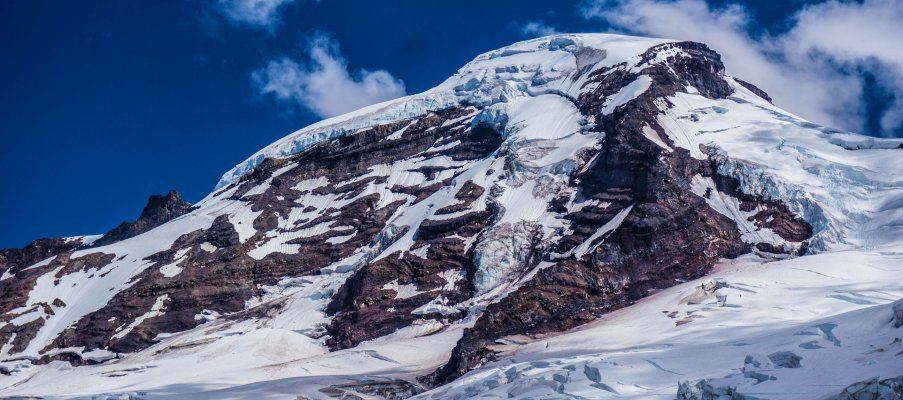
Itinerary
Mount Baker is the quintessential Northwest volcano climb. It is typically done as either a 2 or 3 day outing, depending on previous experience. You will begin at the Heliotrop Ridge trail outside the town of Glacier, Washington on the mountain’s north side. After a several hour hike, we will make our high camp near 6000′ at the top of the “Hogsback ridge”.
The second day is spent covering the necessary skills that will be used climbing the mountain. These include efficient snow climbing techniques, use of ice axe and crampons, traveling as a rope team and self arrest skills. We will eat dinner and get to bed early on this night as we will be getting an alpine start to leave for the summit bid the next morning.
Day two or three, depending on your planned trip, typically begins sometime between midnight and 4 am depending on conditions. After roping up, we will begin ascending the glacier by headlamp and sometimes the light of the moon. Viewing the dark night sky and the Milky way from high on the mountain is an experience you will never forget. We will work our way up the Coleman glacier, staying well clear of the massive ice cliffs of Colfax peak and winding through crevasses on the upper glacier. At approximately 9000′ we will ascend Pumice ridge which leads us onto the upper Deming glacier. From here, a slightly steeper climb up the Roman wall will deliver us to the summit plateau and across to the true summit of Mt Baker. From here we will retrace our steps back to our high camp. After a short nap, we will pack up camp and make our way back to the trailhead by mid afternoon.
In the early season this makes for a great one or two day ski ascent. This is ideal for those wishing to gain some experience in the ski mountaineering world.
Gear List
Skills Required
- No previous climbing experience necessary
- Good physical fitness
While Mount Baker is very much a stand-alone peak, some climbers may wish to combine with an ascent of the Sulphide Glacier on Mt Shuksan to bag two of the Northwest’s most famous summits. Some climbers may want to move to the East side of the range to focus on alpine rock climbing, turning this into a well rounded alpine training program.


